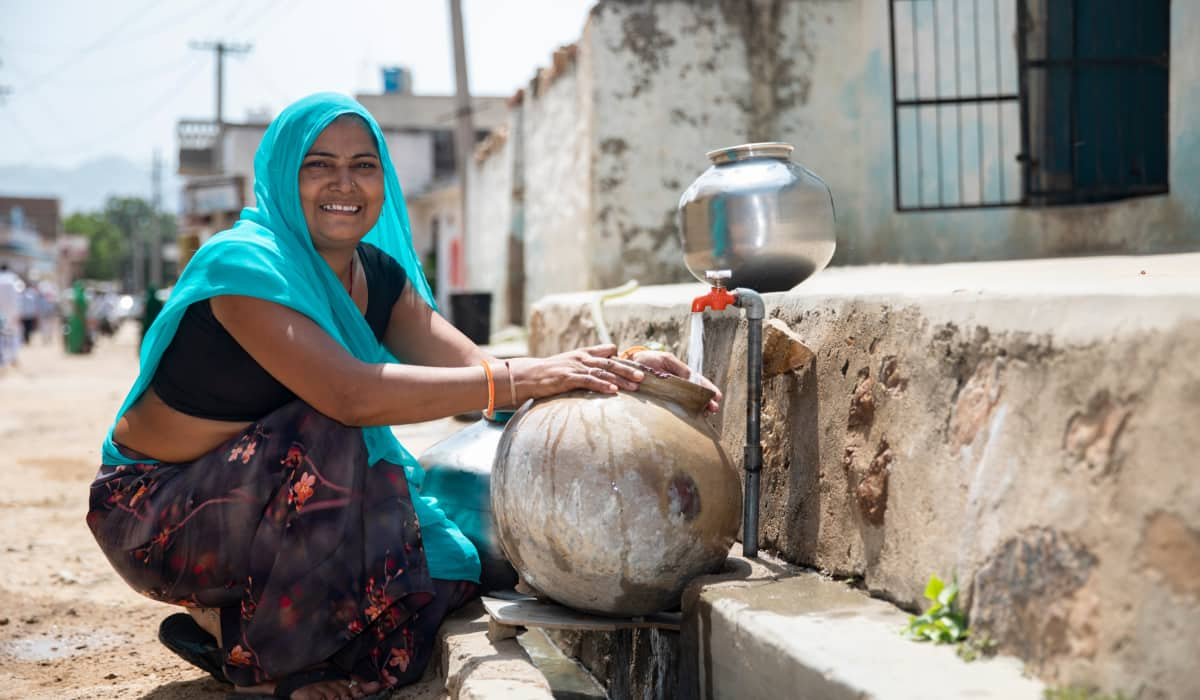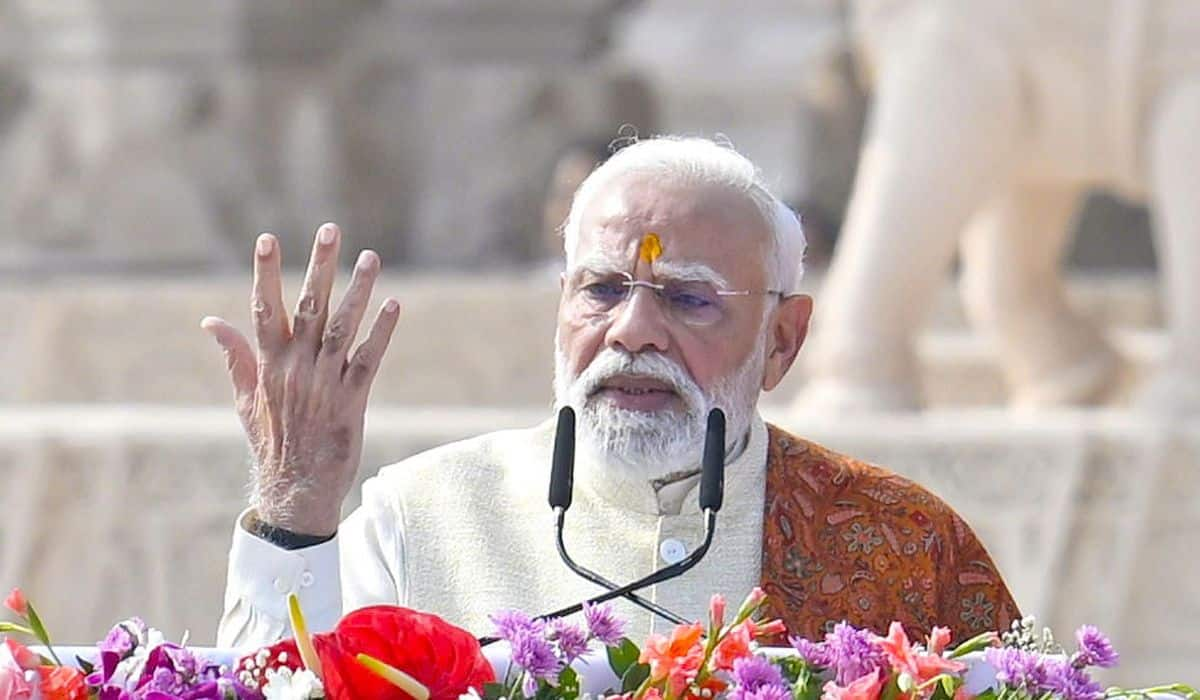Empowering our Farmers
The NDA Government under PM Narendra Modi has put unprecedented focus on agriculture. Numerous initiatives to improve productivity, safeguard farmers and augment their incomes and improve their overall well-being have been taken in the past two years. The steps taken by the Government are helping the farmers in a multitude of ways; from easy availability of fertilizers to improving irrigation facilities, from crop insurance scheme to easy access to credit, from scientific help to better price for their produce. PM Modi has also given a call to double farmers’ incomes by 2022 by multi-modal interventions.

India faced consecutive droughts in 2014-15 and 2015-16. Yet due to the resilience of Indian farmers, agricultural production remained stable and so did supply and inflation. Total foodgrain output in 2015-16 is estimated at 252.23 MT while Total foodgrain output in 2014-15 was 252.02 MT. Ministry of Agriculture has been renamed as Ministry of Agriculture & Farmer Welfare. This reflects a paradigm shift in the vision, which puts farmer first. Allocation for Agriculture and Farmers’ welfare has been increased substantially to Rs 35,984 crore.
The Govt realises that agriculture needs to more predictable, productive and profitable. This needs a multidimensional approach to solving farmers’ problem throughout the entire cycle and hence the Govt has come up with solutions to various issues faced by a farmer.
Pre- sowing:
- Soil health Card to help farmers make the right choice.
The Govt has distributed 1.84 Cr. soil health cards. The target is to cover all 14 crore farm holdings & provide soil health card to all farmers.

- Fertilisers
Long queues for fertilisers are history now. The Govt is ensuring easy availability of fertilisers for farmers. Prices of fertilisers have also been reduced significantly. 100% Neem coated urea is available in the country. This will improve fertilizer use efficiency by 10 to 15 percent and thereby reduce the consumption of urea fertilizer.
- Finance
Govt approved Rs 18,276 crore towards interest subvention of farmer loans. This will ensure that a farmer pays 4% interest for short term crop loans, 7% for post harvest loans, 7% in case of natural calamity, against the market rate of 9%.

During sowing:
- Irrigation Facilities
Pradhan Mantri Krishi Sinchai Yojana to be implemented in mission mode & 28.5 lakh hectares will be brought under irrigation. Implementation of 89 irrigation projects under AIBP, which were languishing for a long time, will be fast tracked. A dedicated Long Term Irrigation Fund is being created in NABARD with an initial corpus of about 20,000 crore. 5 lakh farm ponds and dug wells in rain fed areas and 10 lakh compost pits for production of organic manure will be taken up under MGNREGA.

- Support & Guidance
Scientific advice in the form of sms and calls have been sent to crores of farmers.
After sowing:
- Pradhan Mantri Fasal Beema Yojna
The PMFBY comes with the lowest ever premium rate for farmers. The PMFBY comes with One rate for One crop i.e. Kharif crops: 2 %, Rabi crops: 1.5 %, Horticulture Crops: 5 %. There is no capping on premium rates & no reduction in sum insured, thus ensuring full protection for farmers. Since independence, only around 20% farmers have been covered under insurance till now. PMFBY targets 50% coverage in next 3 years.
- e-NAM
Agriculture marketing is administered by the States as per their agri-marketing regulations, under which, the State is divided into several market areas. This fragmentation of markets hinders free flow of agri commodities from one market area to another and ends up escalating the prices for the consumers without commensurate benefit to the farmer. e-NAM addresses these challenges by creating a unified market through online trading platform, both, at State and National level and promotes uniformity, streamlining of procedures across the integrated markets, removes information asymmetry between buyers and sellers and promotes real time price discovery, based on actual demand and supply, promotes transparency in auction process, and access to a nationwide market for the farmer, with prices commensurate with quality of his produce and online payment and availability of better quality produce and at more reasonable prices to the consumer.
Apart from the above measures, a multi-pronged approach has been adopted to augment farmers’ income. Efforts are being made to increase in farm income through support to allied activities like fisheries, animal husbandry and dairy products. 850 crore for four dairying projects - ‘Pashudhan Sanjivani’, ‘Nakul Swasthya Patra’, ‘E-Pashudhan Haat’ and National Genomic Centre for indigenous breeds. Rashtriya Gokul Mission launched to conserve and develop indigenous cow breeds. Fish production has increased from 95.72 lakh tones during 2013-14 to 101.64 tonnes during 2014-15 The fish production for 2015-16 is estimated at 107.9 lakh tones. The ‘Saving-cum-Relief’ component provided to fishermen during fishing ban /lean period of three months has been increased to Rs. 1500 per month under Blue Revolution scheme.
There has also been a significant increase in relief provided by Government. For the years 2010-2015, a provision of Rs. 33580.93 crore was made for State Disaster Response Fund. The same has been increased to Rs. 61220 crore for the period 2015-2020. A relief of only Rs. 12516.20 crore was approved between 2010-14 crore to the States affected by drought and hailstorm. The NDA Government in year 2014-15 alone approved an amount of Rs. 9017.998 crore as relief to the States affected by drought and hailstorm. During the year 2015-16, Rs. 13496.57 crore have already been approved for till now.
















